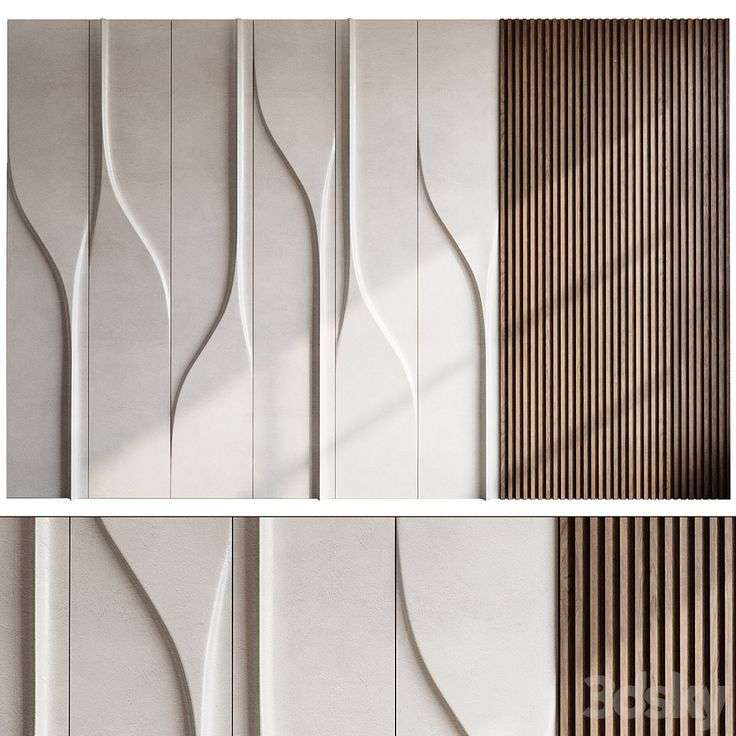In the fast-paced world of design, where perfection often reigns supreme, the concept of Wabi-Sabi offers a refreshing perspective. Rooted in Japanese philosophy, Wabi-Sabi celebrates the beauty of imperfection, transience, and the natural cycle of growth and decay. Instead of striving for flawless, polished surfaces, Wabi-Sabi encourages embracing the unique beauty found in asymmetry, wear, and the passage of time.
At Scale & Structure, we believe that incorporating the principles of Wabi-Sabi into interior design can create a space that feels more authentic, calming, and grounded. In this blog, we’ll explore what Wabi-Sabi is, how to incorporate it into your home, and why embracing imperfection can lead to a more meaningful and harmonious living space.

What is Wabi-Sabi?
Wabi-Sabi is a Japanese aesthetic that celebrates the beauty of imperfection and impermanence. It values the natural cycle of growth, decay, and the passage of time, seeing these elements as intrinsic to the charm and character of objects, spaces, and even people.
- Wabi: Refers to a rustic, simple beauty, often associated with natural materials, simplicity, and a sense of humility. It emphasizes a lifestyle that is unpretentious and in tune with nature.
- Sabi: Refers to the beauty that comes with age, wear, and the patina of time. It embraces the idea that things become more beautiful and meaningful as they age and show signs of wear and use.
Wabi-Sabi is not just about visual aesthetics; it is a philosophy that encourages mindfulness and an appreciation for the fleeting nature of life. It teaches us to find peace and beauty in the ordinary and the imperfect.
How to Incorporate Wabi-Sabi into Interior Design
Incorporating Wabi-Sabi into your home doesn’t mean allowing your space to become chaotic or messy; instead, it’s about creating an environment that feels authentic, comfortable, and connected to nature. Here are some key ways to infuse Wabi-Sabi principles into your interior design:
1. Embrace Natural Materials
One of the cornerstones of Wabi-Sabi is the use of natural, unrefined materials. These materials often have textures, imperfections, and organic qualities that bring warmth and character to a space.
How to use natural materials:
- Wood: Choose furniture, flooring, and decor made from reclaimed or raw wood, which shows grain patterns and imperfections. Wood with visible knots or a natural finish adds a sense of authenticity to the space.
- Stone and Clay: Incorporate natural stone, clay, or ceramic elements like vases, countertops, or pottery. These materials age gracefully and acquire patina over time, adding depth and history to the space.
- Textiles: Opt for natural fabrics like linen, wool, or cotton for cushions, curtains, and upholstery. These materials often age beautifully, becoming softer and more inviting over time.
Scale & Structure Tip: Look for pieces with visible imperfections—like a hand-thrown ceramic vase or a wood table with a natural finish—to evoke the essence of Wabi-Sabi in your home.
2. Celebrate Asymmetry
Wabi-Sabi encourages embracing asymmetry and irregularity, which can add a sense of balance and harmony to a space. Perfection in design is seen as unnatural and sterile, while asymmetry is a reminder of the natural world.
How to incorporate asymmetry:
- Furniture: Choose pieces with organic, irregular shapes or uneven finishes. A hand-carved chair or a rough-hewn wooden table can add character and warmth to your space.
- Arrangement: When arranging furniture or decor, avoid perfect symmetry. Allow for small differences in height, shape, and placement to create a more dynamic and natural feeling in the room.
- Decor: Incorporate accessories like handmade pottery, unevenly shaped mirrors, or abstract artwork that reflect Wabi-Sabi’s embrace of imperfection and asymmetry.
Scale & Structure Tip: Rather than using identical lamps on either side of the bed or matching picture frames, try mixing different designs, shapes, and sizes to create a more relaxed, unstudied feel.
3. Allow for Wear and Patina
In Wabi-Sabi, aging and wear are seen as beautiful and meaningful. Instead of hiding the marks of time, you celebrate them as part of the item’s story. This could mean allowing your furniture or decor to show signs of use, or even seeking out pieces with inherent imperfections.
How to incorporate wear and patina:
- Vintage and Antique Items: Look for vintage furniture or decor with a patina that tells the story of its history. Scratches, scuffs, and weathered surfaces add charm and authenticity to the space.
- Leather: Leather furniture or accessories that develop a natural patina over time can bring richness and character to your space. Over time, the leather will soften and deepen in color, making each piece unique.
- Rugs and Fabrics: Choose rugs or textiles that have a worn or lived-in feel. A vintage rug with frayed edges or a well-loved quilt can add warmth and texture to the room.
Scale & Structure Tip: Opt for materials that age beautifully over time, like brass, copper, or leather, to incorporate a sense of history and character into your home.
4. Keep It Simple and Uncluttered
Wabi-Sabi design values simplicity and the absence of unnecessary decoration. A cluttered space can feel chaotic and distracting, whereas a simple, uncluttered room creates a peaceful and relaxing environment.
How to create simplicity in your space:
- Minimalistic Approach: Keep decor to a minimum. Choose only a few meaningful, well-chosen items that enhance the atmosphere of your home. A single, imperfect vase on a shelf or a handmade bowl on the table can create an understated beauty.
- Open Space: Allow for plenty of open space in your room, which can help reduce feelings of stress and allow you to appreciate the beauty of each object in the room.
- Storage: Use simple storage solutions to keep everyday items out of sight. Wabi-Sabi embraces the beauty of empty space and simplicity, so aim for a serene and organized environment.
Scale & Structure Tip: Opt for neutral colors and natural textures in furniture and decor. This will create a soothing atmosphere that complements the beauty of simplicity and imperfection.
5. Incorporate Nature
The natural world plays a central role in Wabi-Sabi, and bringing elements of nature into your home can deepen the connection to this philosophy. Nature’s imperfection and natural cycles are mirrored in Wabi-Sabi’s aesthetic.
How to bring nature indoors:
- Indoor Plants: Incorporate plants that show signs of natural growth and change. Plants like bonsai trees, air plants, or simple succulents can evoke a sense of calm and growth in the space.
- Natural Light: Maximize natural light by using sheer curtains or leaving windows uncovered. Light that changes throughout the day reflects the beauty of time passing and nature’s cycles.
- Nature-Inspired Decor: Use nature-inspired decor like driftwood, stones, or leaves as accents in your space. These elements carry the natural irregularities of the earth, aligning perfectly with the Wabi-Sabi ethos.
Scale & Structure Tip: Use elements from nature, like unpolished stones or driftwood, as decor pieces to bring a sense of organic beauty into the space.
Why Embrace Wabi-Sabi in Interior Design?
Embracing Wabi-Sabi in your home can create a space that feels authentic, comfortable, and deeply connected to nature. By celebrating imperfection and allowing the passage of time to shape your surroundings, you can create an environment that is more meaningful and fulfilling.
Wabi-Sabi encourages a mindful approach to design—focusing on what truly matters, and letting go of the need for perfection. This approach can help you cultivate a space where you feel at peace, connected to nature, and surrounded by objects that have a story to tell.
At Scale & Structure, we believe that interior design should reflect your personal style and bring a sense of comfort and tranquility. Wabi-Sabi allows you to create a home that feels timeless, imperfectly beautiful, and deeply connected to life’s natural flow.



